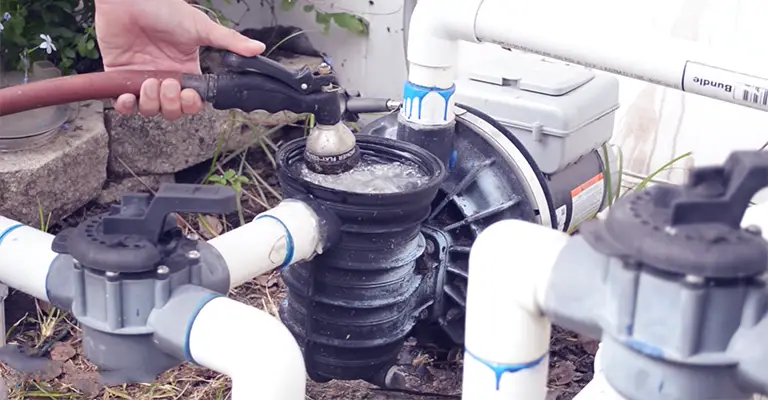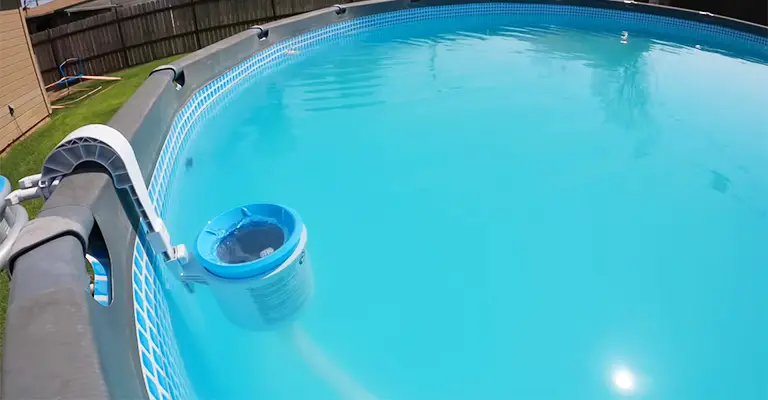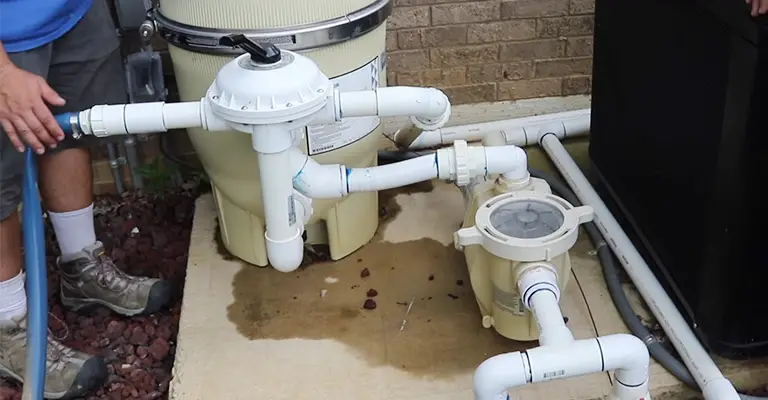Maintaining a pristine and inviting pool requires regular maintenance, and one crucial aspect is ensuring proper filtration.
After shock-treating your pool to eliminate bacteria and contaminants, you might wonder, “How long should I run my pool filter?”
Understanding the ideal duration for running your filter post-shocking is essential for both water clarity and the overall safety of swimmers. If you shock your swimming pool, you need to run its pump and filter for at least 8 hours.
You should run your filter for at least 24 hours if you are treating algae. It is necessary to run the filter for 24 hours to 7 days after shocking if the pool has significant algae.
By doing this, the filter will be able to clean the water, and the pump can circulate the chemicals.
Summary
15 minutes of non-chlorine shock is sufficient if the pump is running. In a chlorine shock, how and for what you shock depends on the application.
If one is doing a maintenance dose, one would need to wait approximately 4 hours after turning on the pump. Is it a shock to increase chloride levels, or is it a shock to kill algae? It’s about right for the pump to run for 24 hours.
An AFR (accidental faecal release) could take up to 72 hours of waiting and pumping. It is safe for swimming when the chlorine level drops to 5 ppm or less.
Be sure to check the water for chlorine levels before going swimming.
When you’re waiting, you should be running your pump. It’s 24 hours during algae treatment (or until chlorine levels drop to less than 5 parts per million).
How To Know How Long To Run Your Pool Pump After Shocking?

If there is algae or dirtiness in the pool’s water, the length of time that you should run the filter and pump depends on how much time you need to run them. Your filter will need to run for longer if your pool is dirty.
In order to get your pool water clear, you need to filter for an extended period of time. It is equally essential to maintain the chemical balance.
By observing how it looks, you can check the pool’s water to see if the filter has run long enough. Having sufficiently filtered it, it will start appearing clear again.
When operating a pool filter, a light green hue is generally recommended. It takes about this long for the filter to capture and remove suspended algae particles, gradually restoring the purity of the water.
For pools with darker shades of green, more intensive filtration is required. When algae levels are high, running the filter continuously for several days, 24 hours a day, is recommended.
In addition to ensuring the thorough removal of stubborn algae, this extended filtration also promotes a healthier pool environment.
Your pool’s filtration will be even more complicated if it appears blackish green. To ensure continuous operation, running the filter continuously for up to a week is recommended.
Allow the filter ample time to process the algae-infested water so that it can effectively combat the persistent black-green algae and restore your pool’s luster.
Why Run Pool Filter After Shocking

Running your pool filter and pump aftershock is crucial to keeping your pool in top condition. Two reasons make it necessary to run the pump and filter:
- Maintain the pool’s water by cleaning it and filtering it.
- Distribute the pool shock by circling it throughout the pool.
- It is recommended you allow a minimum of six hours to allow the shock to circulate evenly throughout the pool.
What If The Pump Isn’t Run Long Enough?
If you don’t run your pump for long enough aftershock, you’ll experience the following:
- Increasing the chances of algae recurring
- Algae-covered pools (if you have any)
- In the pool, the water looks cloudy or milky
- It is not possible to mix all the water with the shock
When your pool filter is not correctly running after shocking, you will not have the added chlorine circulated efficiently.
Without circulation around the pool, chlorine cannot do its job. Unless your chlorine is circulated, it won’t be able to disinfect the entire pool, so your pool may remain cloudy and bacterially laden.
A pool with too much chlorine could stain from sitting too long in one area, and nobody wants that.
After shocking, you should properly run the pool filter to remove the dead algae and other bacteria. This could cause staining and failure to sanitize your pool.
When a pool is shocked, anything in the pool will remain until it has been filtered out and sanitized. In the absence of filtering, you will have a cloudy pool that can support bacteria and algae growth.
Should You Clean the Filter or Backwash After Shocking?
If the pool is filthy or there are algae, the filter may need cleaning or backwashing. It is a good idea to brush the sides of the pool after shock and vacuum out any algae and debris.
If you vacuum your pool to waste, you will prevent dirt and algae from getting stuck in the filter. The process is not always possible, or it is simply not possible to dispose of all of it properly.
Use a high-quality clarifier to make particles larger and easier for the filter to handle. To get your filter running optimally, you need to clean or backwash it after brushing and vacuuming off all algae and debris.
Conclusion
The time spent running your filter after shocking your pool is just as important as the time you spend shocking it.
When your pool is particularly dirty or has algae, run your filter for 24-48 hours or several days to properly circulate the chlorine and clean the water.







